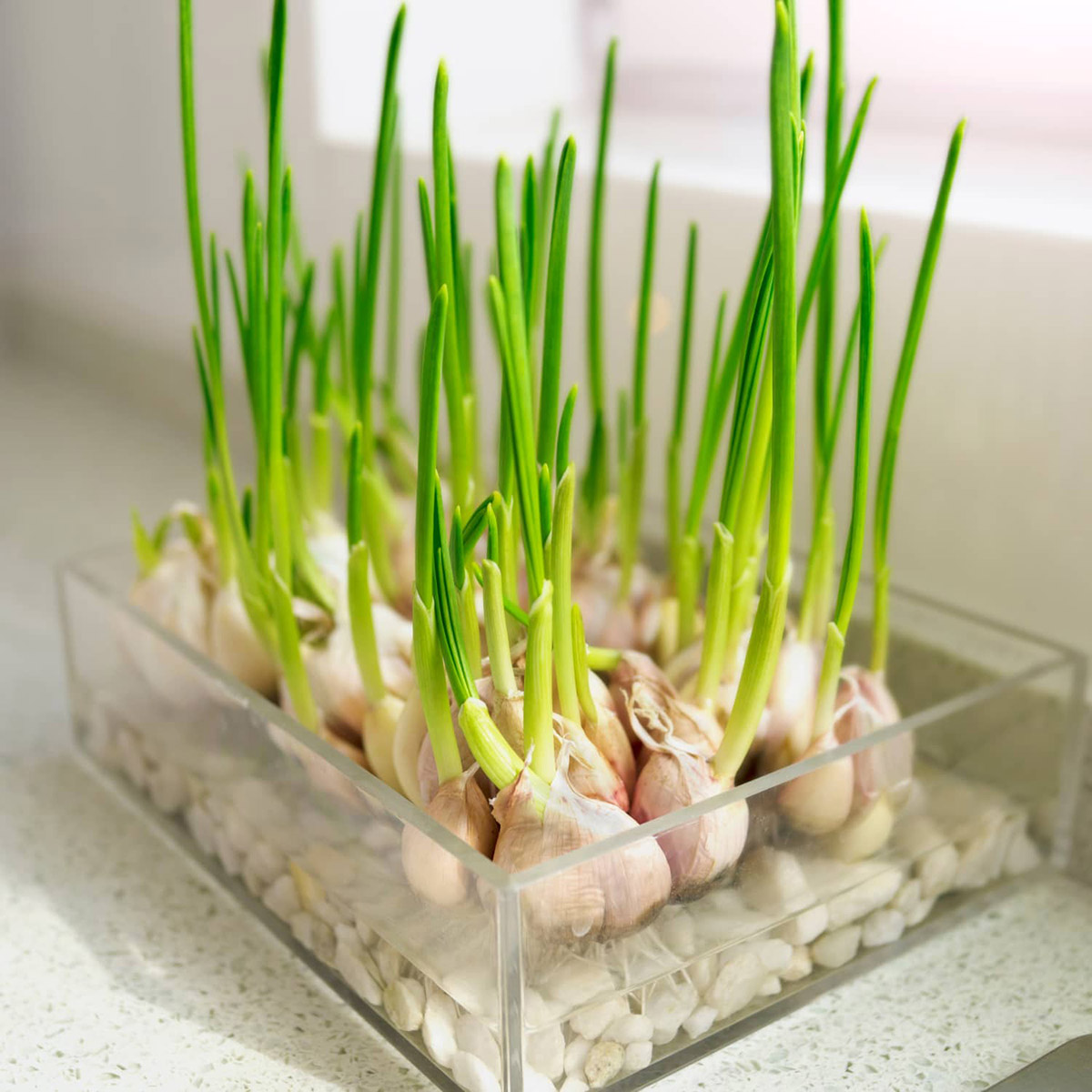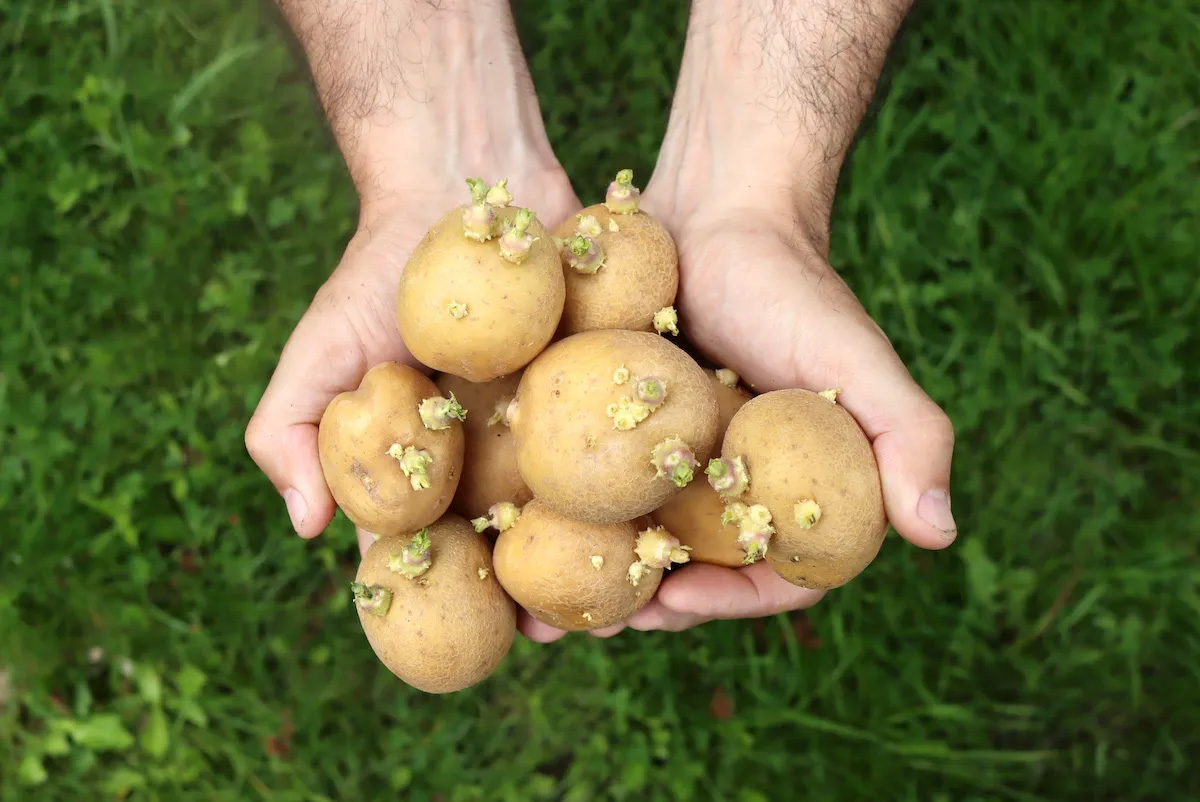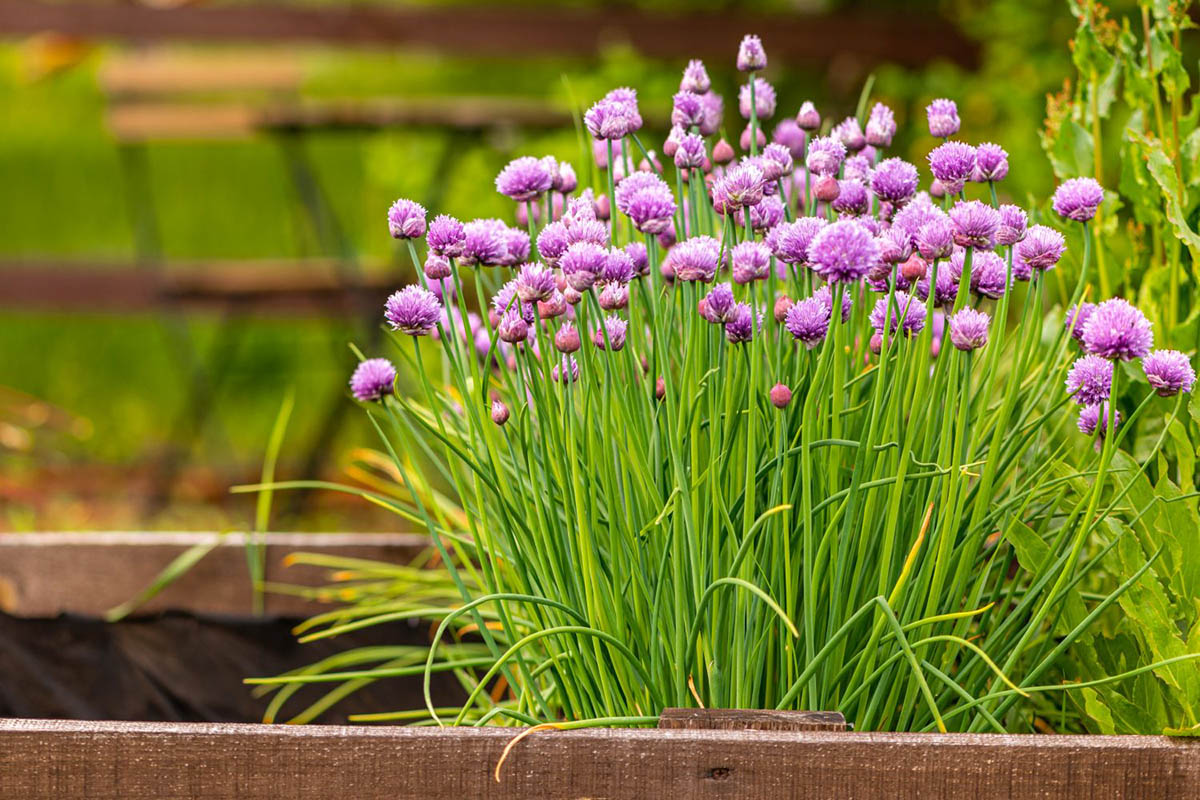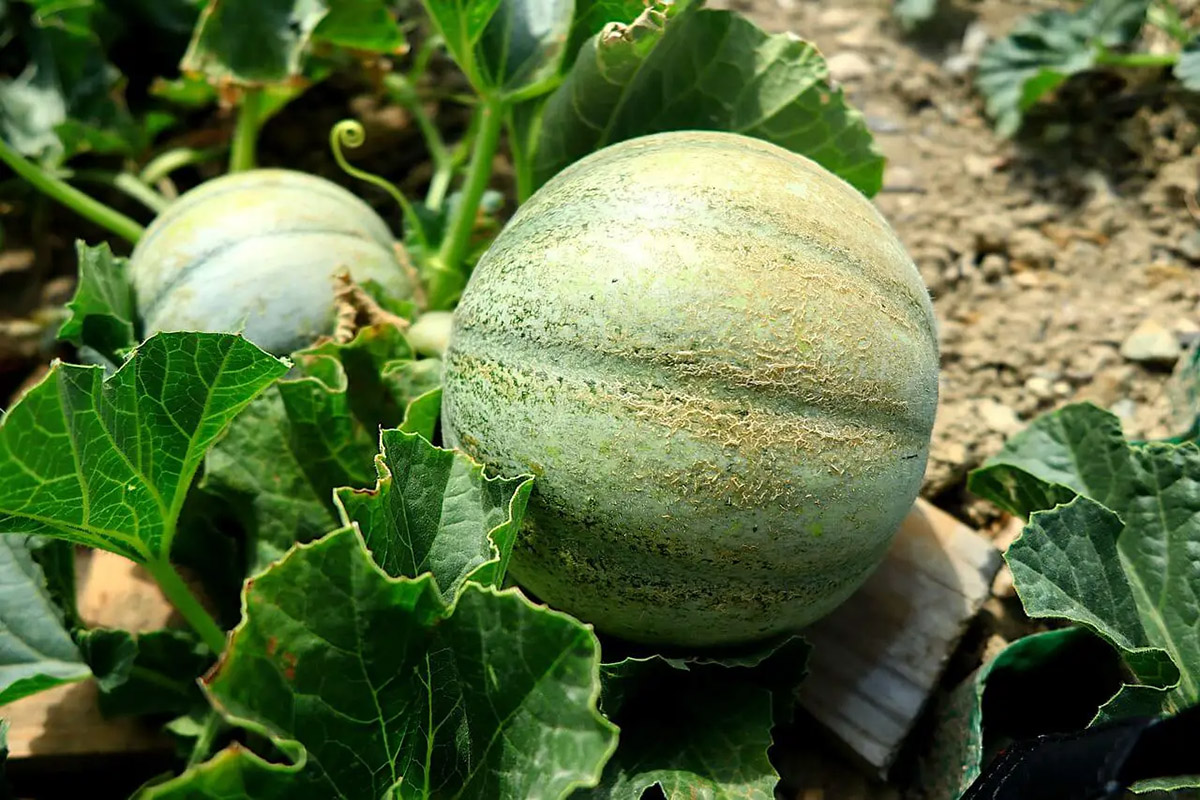Home>Garden Essentials>How Long Does It Take For A Lemon Tree To Germinate


Garden Essentials
How Long Does It Take For A Lemon Tree To Germinate
Modified: March 15, 2024
Discover how long it takes for a lemon tree to germinate in your garden. Find out the ideal conditions and tips for successful germination.
(Many of the links in this article redirect to a specific reviewed product. Your purchase of these products through affiliate links helps to generate commission for Storables.com, at no extra cost. Learn more)
Introduction
When it comes to growing your own lemon tree, there’s nothing quite as exciting as watching that first sprout emerge from the soil. But how long does it actually take for a lemon tree to germinate? The answer is not as straightforward as you might think. Several factors can affect the germination time of lemon seeds, including the seed variety, environmental conditions, and seed preparation techniques.
In this article, we’ll explore the various factors that influence the germination time of lemon seeds and provide you with valuable tips on seed preparation, planting techniques, monitoring, and caring for your growing lemon tree. So let’s dive in and unlock the secrets of successful lemon seed germination!
Key Takeaways:
- Growing a lemon tree from seed requires patience and attention to detail. Factors like seed variety, environmental conditions, and proper care during germination significantly impact the success of growing a healthy lemon tree.
- Harvesting and preparing lemon seeds for planting involves steps like seed extraction, drying, and scarification. Understanding the germination process and providing proper care are essential for nurturing a thriving lemon tree.
Factors Affecting Germination Time
Several factors can influence the germination time of lemon seeds. Understanding these factors will help you manage your expectations and make informed decisions throughout the germination process. Here are some key factors to consider:
Seed Variety:
The variety of lemon seed you choose plays a significant role in determining the germination time. Some lemon varieties are known to have a shorter germination period, while others may take longer. It’s essential to research and select a lemon variety that suits your climate and desired outcome.
Environmental Conditions:
The environmental conditions in which you grow your lemon seeds can greatly impact the germination time. Factors such as temperature, humidity, and light availability can either speed up or slow down the germination process. Providing optimal conditions for your seeds will promote faster and more successful germination.
Seed Quality:
The quality of the lemon seeds you use can also affect the germination time. Fresh, healthy seeds have a higher chance of germinating quickly compared to old or damaged seeds. It’s best to use seeds obtained from reputable sources to ensure the highest quality and best chances of successful germination.
Seed Treatment:
Applying certain seed treatments can help accelerate the germination process. Some gardeners choose to soak lemon seeds in water for several hours or overnight before planting. This process, known as seed scarification, can help soften the seed coat and promote faster germination.
Soil Quality:
The type and quality of soil used for planting lemon seeds can impact germination time. Ensure that the soil is well-draining, rich in organic matter, and has a pH level between 5.5 and 6.5. These conditions provide an ideal environment for lemon seeds to germinate and establish strong root systems.
Watering and Moisture:
Proper watering and moisture levels are crucial during the germination process. While it’s important to keep the soil consistently moist, overwatering can lead to root rot and hinder germination. Maintaining a careful balance and monitoring the moisture levels will support healthy seed development.
By considering and optimizing these factors, you can help ensure a faster and more successful germination process for your lemon seeds. Now that we’ve explored the factors affecting germination, let’s move on to seed preparation techniques to set the stage for successful growth.
Seed Preparation
Properly preparing your lemon seeds before planting can significantly increase the chances of successful germination. Here are a few seed preparation techniques to consider:
Read more: How Long Do Spruce Tree Take To Germinate
Seed Extraction:
Start by extracting the seeds from a ripe, juicy lemon. Cut open the lemon and carefully remove the seeds, making sure to remove any flesh or pulp that may be attached to them. Rinse the seeds gently with water to remove any remaining residue.
Seed Drying:
After rinsing, allow the seeds to dry thoroughly. Place them on a clean paper towel or a mesh screen in a well-ventilated area. Avoid exposing the seeds to direct sunlight, as this can damage them. Allow the seeds to air dry for about a week or until they are completely dry to the touch.
Seed Scarification:
As mentioned earlier, scarifying the seeds can help speed up the germination process. You can accomplish this by gently nicking the outer layer of the seed coat with a small knife or sanding it lightly with sandpaper. This process creates small openings that allow water to penetrate the seed and promote faster germination.
Seed Stratification:
Some lemon varieties benefit from a period of simulated winter, which is known as stratification. This technique tricks the seed into thinking it has experienced a cold winter and prepares it for germination in the spring. To stratify the seeds, place them in a plastic bag with a damp paper towel and refrigerate them for about four weeks.
By following these seed preparation techniques, you can ensure that your lemon seeds are in the best possible condition for successful germination. Now that the seeds are ready, let’s move on to exploring the best planting techniques for your lemon tree.
Planting Techniques
Now that you have prepared your lemon seeds, it’s time to plant them using the right techniques. Proper planting will provide an optimal environment for seed germination. Here are some planting techniques to consider:
Pot or Container:
Choose a pot or container with adequate drainage holes for planting your lemon seeds. Using a container allows for better control over soil conditions and makes it easier to monitor the germination process. Make sure the container is at least 8-10 inches deep to accommodate root growth.
Seedling Mix:
Use a well-draining seedling mix or a combination of potting soil and vermiculite to fill the container. Avoid using heavy garden soil, as it may not provide the necessary drainage for optimal seed germination. Moisten the soil slightly before planting to create a suitable environment for the seeds.
Seed Placement:
Plant the lemon seeds about 1 inch deep in the soil. Place one or two seeds in each container, spacing them evenly. If you decide to plant more than one seed, thin out the weaker seedlings once they begin to grow, leaving the strongest one to develop into a healthy lemon tree.
Read more: How Long Does Kale Take To Germinate
Lights and Temperature:
Place the container in a warm location where it can receive at least 6-8 hours of indirect sunlight each day. If natural sunlight is limited, you can supplement with fluorescent or grow lights to provide the necessary light energy for germination. Maintain a consistent temperature between 70-85°F (21-29°C) for optimal seed germination.
Watering and Moisture:
After planting, water the container gently to moisten the soil. Avoid overwatering, as excess moisture can lead to issues such as root rot. Check the moisture level regularly and water as needed to keep the soil evenly moist, but not waterlogged. It’s important to provide consistent moisture throughout the germination process.
Covering the Seeds:
Cover the planted seeds with a thin layer of soil, approximately 1/4 inch deep. This layer of soil helps maintain moisture and provides a stable environment for the seeds to germinate. Avoid packing the soil down too firmly, as it can hinder seedling emergence.
By following these planting techniques, you will create an ideal environment for your lemon seeds to germinate. Next, let’s explore the germination process itself and how to monitor and care for your growing lemon tree.
Germination Process
The germination process is an exciting stage in the growth of your lemon tree. During this period, the seeds will begin to sprout and develop into healthy seedlings. Here’s what you can expect during the germination process:
Read more: How Long Does It Take Catnip To Germinate?
Seedling Emergence:
After planting, it typically takes around 2 to 4 weeks for the lemon seeds to germinate. During this time, the seeds will absorb water and swell, eventually cracking open to allow the emergence of the root. Once the root appears, a shoot will begin to grow upwards towards the surface.
Leaf Development:
As the shoot grows, it will produce its first set of leaves. These initial leaves, known as cotyledons, provide energy to the young seedling until true leaves start to develop. True leaves are the characteristic lemon tree leaves with a distinct shape and color. Leaf development indicates that the seedling is growing and establishing itself.
Seedling Care:
During the germination process, it’s crucial to provide proper care for the developing seedlings. Ensure that they receive adequate light, preferably from natural sources, or use fluorescent or grow lights if needed. Maintain the appropriate temperature range and continue to monitor and adjust the watering to keep the soil consistently moist, but not saturated.
Transplanting:
Once the seedlings have developed true leaves and have grown a few inches tall, they can be transplanted into individual pots or larger containers. Carefully lift each seedling, being mindful not to damage the roots, and plant it in the new container using the same planting techniques mentioned earlier. Provide optimal conditions and continue to care for the seedlings as they grow.
Time to Mature Tree:
It’s important to note that while the germination process takes a few weeks, it will take several years for a lemon tree to reach maturity and produce fruit. Lemon trees typically take around 3 to 5 years to reach this stage, depending on the variety and growing conditions.
By understanding the germination process and providing proper care during this stage, you can set your lemon seedlings on a path to healthy growth. Now let’s explore how to monitor and care for your lemon tree as it continues to develop.
Monitoring and Care
Monitoring and providing proper care for your growing lemon tree is crucial to ensure its healthy development. Here are some key aspects to consider when monitoring and caring for your lemon tree:
Light and Temperature:
Lemon trees thrive in full sunlight, so place your tree in a location where it can receive at least 6-8 hours of direct sunlight each day. Make sure to protect it from extreme temperatures, such as frost or excessive heat, as these can damage the tree. Maintain a temperature range between 55-85°F (13-29°C) for optimal growth.
Watering:
Lemon trees require regular and consistent watering. Water the tree deeply, ensuring that the soil is evenly moist but not waterlogged. During periods of active growth, increase watering to meet the tree’s needs. Avoid letting the soil dry out completely, as this can stress the tree and impact its growth.
Fertilizing:
Provide your lemon tree with appropriate nutrients by fertilizing it regularly. Use a balanced citrus fertilizer or a slow-release fertilizer specifically formulated for citrus trees. Follow the package instructions for application rates and frequency. Fertilize in early spring and again in late summer or early fall to support healthy growth and fruit production.
Pruning:
Pruning helps promote a strong, well-shaped tree and can improve airflow and light penetration. Remove any dead, damaged, or crossing branches. Prune to maintain an open canopy and remove any suckers or water sprouts that may emerge from the base of the tree.
Pest and Disease Control:
Monitor your lemon tree regularly for any signs of pests, such as aphids, mealybugs, or citrus leaf miners. If you notice any problems, promptly treat the tree with appropriate organic or chemical controls. Additionally, keep an eye out for common diseases like citrus canker or root rot, and take necessary measures to prevent and manage them.
Harvesting:
Once your lemon tree reaches maturity and starts producing fruit, it’s time to enjoy the fruits of your labor. Harvest lemons when they reach a full yellow color and have a slightly glossy appearance. Gently twist or cut the fruit from the tree, being careful not to damage the branches or the remaining fruit.
By regularly monitoring and providing proper care for your lemon tree, you’ll help ensure its health and longevity. Now, let’s address some common troubleshooting tips to help you overcome any challenges you may encounter along the way.
Troubleshooting
Cultivating a lemon tree can sometimes come with challenges, but with proper troubleshooting techniques, you can overcome them and help your tree thrive. Here are some common issues you may encounter and how to troubleshoot them:
Lack of Germination:
If your lemon seeds are not germinating, it could be due to factors such as improper seed preparation, unsuitable environmental conditions, or low seed quality. Make sure you follow the seed preparation techniques mentioned earlier, provide optimal light and temperature conditions, and ensure that you’re using fresh, high-quality seeds.
Poor Seedling Growth:
If your lemon seedlings are growing slowly or appear weak, it may be due to inadequate light, improper watering, or nutrient deficiencies. Provide your seedlings with sufficient sunlight or supplemental grow lights, water consistently and ensure proper drainage, and fertilize regularly with a balanced citrus fertilizer to address nutrient deficiencies.
Pest Infestations:
If you notice pests such as aphids, mealybugs, or citrus leaf miners on your lemon tree, take immediate action to control them. Use organic insecticidal soaps or horticultural oils specifically formulated for citrus pest control. Ensure thorough coverage of the affected areas and monitor the tree regularly to prevent further infestations.
Read more: How Long Does Okra Take To Germinate
Disease Issues:
Common diseases such as citrus canker or root rot can affect your lemon tree’s health. To prevent disease, maintain proper watering practices, avoid overwatering, and ensure good drainage. If you notice signs of disease, such as spots on the leaves or root discoloration, consult a local gardening expert or extension service for appropriate treatment methods.
Fruit Drop:
If your lemon tree is dropping immature fruit, it may be due to stress factors such as irregular watering, extreme temperatures, or nutrient imbalances. Ensure consistent and deep watering, protect the tree from temperature extremes, and provide regular fertilizer applications to address nutrient deficiencies.
No Fruit Production:
If your lemon tree is not producing fruit, it may be because it’s still too young or lacks proper care. Lemon trees typically take several years to reach maturity and produce fruit. Ensure proper watering, fertilizing, and optimal environmental conditions. Be patient, and with time, your lemon tree should start bearing fruit.
Remember, troubleshooting is an essential part of gardening, and with a little persistence and knowledge, you can overcome challenges and help your lemon tree thrive. Now that you’re equipped with troubleshooting tips, let’s wrap up our discussion.
Harvesting Lemon Seeds
Harvesting lemon seeds is a rewarding process that allows you to propagate new lemon trees and continue your gardening journey. Here are the steps to harvest and prepare lemon seeds for planting:
1. Selecting Ripe Lemons:
Choose ripe, juicy lemons for seed harvesting. Look for lemons that have a bright yellow color and a slight give when gently squeezed. Ripe lemons will typically have well-developed seeds inside.
2. Extracting the Seeds:
Cut the lemon open and extract the seeds. Carefully remove the seeds from the flesh, making sure to separate them from any attached pulp or juice. You can use a spoon or your fingers to gently pry out the seeds.
3. Cleaning the Seeds:
Rinse the extracted seeds under running water to remove any remaining pulp. Use your fingers to gently rub the seeds to ensure they are clean. Avoid using harsh chemicals or cleaners during this process, as they can damage the seeds.
4. Drying the Seeds:
Place the cleaned seeds on a paper towel or a mesh screen in a well-ventilated area. Allow them to air dry for about a week or until they are completely dry to the touch. This drying period helps remove any excess moisture and prepares the seeds for storage or immediate planting.
Read more: How Long Does It Take For Thyme To Germinate
5. Storing the Seeds:
If you’re not planning to plant the seeds right away, store them in a cool, dry place in an airtight container. Avoid exposing the seeds to direct sunlight or fluctuating temperatures, as this can affect their viability. Properly stored lemon seeds can remain viable for several years.
6. Preparing for Planting:
Before planting the seeds, you can consider using seed scarification techniques to enhance germination. Gently nick the outer layer of the seed coat with a knife or lightly sand it with sandpaper. This process creates small openings that allow water to penetrate the seed and promote faster germination.
7. Planting the Seeds:
Follow the planting techniques mentioned earlier to plant the prepared lemon seeds. Place the seeds about 1 inch deep in a well-draining seedling mix or a mixture of potting soil and vermiculite. Water gently after planting and continue to provide optimal growing conditions for the seeds to germinate.
By following these steps, you can harvest and prepare lemon seeds for successful planting and propagation. Enjoy the satisfaction of nurturing your lemon trees from seed and watching them grow into fruitful plants. Happy gardening!
Conclusion
Growing your own lemon tree from seed is a fulfilling and rewarding experience. By understanding the factors influencing germination time, proper seed preparation techniques, optimal planting methods, and the care required during different stages of growth, you can set your lemon tree up for success.
Remember that patience is key when it comes to growing lemon trees. The germination process can take a few weeks, and it can take several years for a lemon tree to reach maturity and produce fruit. But with consistent monitoring, proper care, and troubleshooting, you can enjoy the beauty and benefits of your own homegrown lemons.
From selecting the right lemon variety to harvesting and preparing lemon seeds for planting, each step in the journey is a learning experience. The joy of watching a lemon seed transform into a flourishing tree is unparalleled. As you tend to your lemon tree, you’ll gain a deeper appreciation for the wonders of nature and the satisfaction of growing your own food.
Whether you plant your lemon tree in a spacious garden, a cozy balcony, or a sunny window sill, it will add beauty to your surroundings and provide you with a continuous supply of fresh, vibrant lemons. From lemonade and culinary delights to aromatic zest and refreshing fragrances, lemons have a diverse range of uses that can elevate your culinary creations and enrich your daily life.
So, gather your supplies, prepare your lemon seeds, and embark on the journey of growing your very own lemon tree. With knowledge, care, and a touch of patience, you’ll reap the rewards of your green thumb and enjoy the bountiful harvest of your fruitful lemon tree for years to come. Happy gardening!
Frequently Asked Questions about How Long Does It Take For A Lemon Tree To Germinate
Was this page helpful?
At Storables.com, we guarantee accurate and reliable information. Our content, validated by Expert Board Contributors, is crafted following stringent Editorial Policies. We're committed to providing you with well-researched, expert-backed insights for all your informational needs.





0 thoughts on “How Long Does It Take For A Lemon Tree To Germinate”